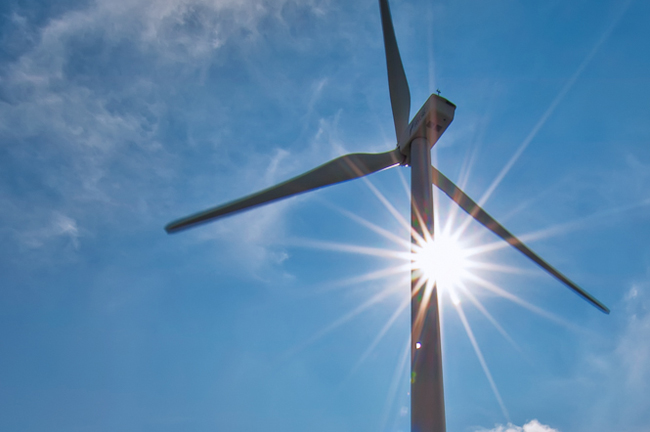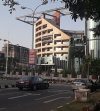The Southern African region has seen slower economic growth over the past year, as its largest economy, South Africa, faces multiple challenges. Civil unrest, the electricity crisis and natural disasters have contributed to clouding the outlook for the region, which lags behind other parts of Africa according to the African Development Bank's new economic report.
The Southern African Economic Outlook 2023, launched on July 24, analyzes recent economic trends and developments in Southern Africa. In line with the theme of this year’s annual outlook, “Mobilizing Private Sector Finance for Climate and Green Growth in Africa”, the report also explores the potential role of the private sector in financing the region’s climate action and green growth ambitions.
In 2022, GDP growth in the Southern Africa region had barely reached 2.7%, well below the global and African averages of 3.4% and 3.8%.
The slowdown seen in South Africa is also being seen in other countries in the region, such as Zimbabwe, Zambia, Malawi, Madagascar and São Tomé and Príncipe, which have also experienced extreme weather events, the report said.
Growth in the region is expected to slow further in 2023 to 1.6%, before improving slightly (2.7%) in 2024. The external debt burden, which is expected to remain high across the Southern African region, puts additional pressure on the environment. In 2022, it was at 48%.
“In most Southern African countries, growth in per capita income is falling short of the growth rate needed to reverse the (Covid-19) pandemic-induced increase in poverty and put the region on track to achieve Sustainable Development Goal 1. High rates of poverty and inequality remain endemic in the Southern African region,” the report notes.
External debt, which stood at 48% in 2022, is expected to remain high across the Southern African region. Overall, debt exposure is mixed in Southern African countries. However, the budget deficit improved slightly in 2022, to 3.5% of GDP in 2022 from 3.7% of GDP in 2021.
The report attributes the weak regional performance to “ongoing political and structural issues in South Africa, which are weighing on regional growth, and Russia’s invasion of Ukraine, which continues to put pressure on energy and food prices.” »
The report also notes that declining per capita income growth in most Southern African countries poses a threat to the growth rate needed to reduce poverty, while sluggish growth is weighing on youth employment. Unemployment is described as “one of the biggest challenges in the region”.
Southern Africa’s annual climate action needs of $90 billion offer investment potential
Speaking at the launch of the report, Kevin Urama, Chief Economist and Vice President of the African Development Bank, commended African governments for their “remarkable resilience” in the face of recent challenges.
Citing the report, he said that the financial needs for climate action in Southern Africa stood at $1 trillion, with an annual requirement of $90.3 billion for the period 2020-2030. The average annual flow of climate action finance to Southern Africa is $6.2 billion, just 6.9% of what is needed. In addition, Southern Africa received the lowest financial flows relative to its financial needs, compared to other African regions.
Most Southern African countries receive funding for mitigation projects rather than adaptation investments, which is the main need. This underscores the urgency of finding new ways to mobilize finance to address Africa’s development challenges, said Kevin Urama.
“We estimate that the continent will need around $235-250 billion per year by 2030 to meet the necessary investment needs under nationally determined contributions. This therefore represents for Africa, the African private sector and the global private sector an investment opportunity of 213.4 billion dollars per year, just to fight against climate change,” he said.
The African Development Bank is spearheading regional initiatives that intersect climate change adaptation, energy transition and sustainability across the continent, said Leïla Mokaddem, Managing Director for the Southern Africa Region of the African Development Bank. These include financial instruments, green bonds, technical expertise, climate insurance schemes, policy interventions and much more.
“ The urgency of climate adaptation and climate mediation action at the regional scale is crucial for our future. The continent’s needs demand that Africa focus on identifying and assessing disasters, risks as well as strengthening collaboration and coordination of appropriate responses,” she said.
In his presentation of the main findings of the report, Chief Economist for the region, Auma George Kararach, noted that limited annual funding for climate change and adaptation meant that several Southern African countries were at risk of not meeting their Nationally Determined Contributions. It would be essential to prioritize development with climate portfolios, using private sector climate finance, which is still relatively underdeveloped in the region, he said.
“To do this, we need to think about a wide range of funding channels and instruments,” said Auma George Kararach.
Ferdinand Bakoup, acting director of the Department of National Economy, said South Africa’s 20% share in Africa’s natural capital reserves, estimated at more than $6 trillion, offered huge potential for investors.
“ This region can benefit from better management of its natural capital ”, said Ferdinand Bakoup.
The African Development Bank’s Regional Office for Southern Africa covers 13 countries, which vary widely in size, income and natural resources. The region includes two of the ten largest economies in Africa: South Africa and Angola.
Source: African Development Bank Group (AfDB)




















Réagissez à cet article